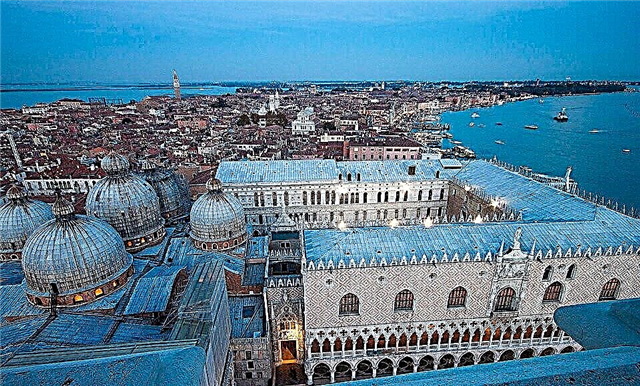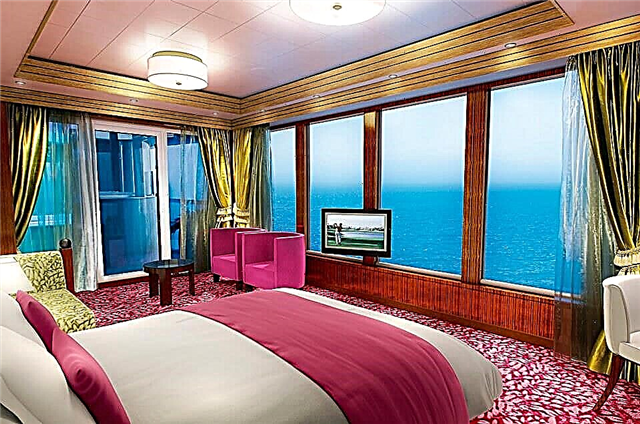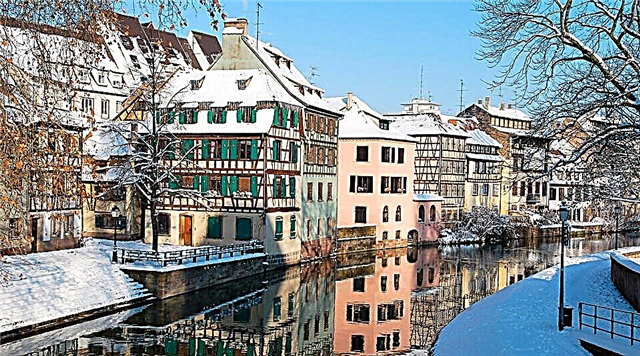Address: Russia, Moscow, Nagatinsky Zaton of the Southern Administrative District, Kolomenskoye estate
Construction date: 1528 - 1532
Coordinates: 55 ° 40'02.1 "N 37 ° 40'14.5" E
Content:
The tent-roofed dome directed into the sky can be seen in all guidebooks around Moscow. It has been decorating the palace village for nearly five centuries. The snow-white Ascension Church is named a man-made miracle and is included in the UNESCO World Heritage List. Many tourists come to look at the unique monument of ancient Russian architecture. Of Russia and other countries of the world.

Temple history
The unusual temple was founded during the reign of Grand Duke Vasily III. Little information has been preserved about the construction itself, but it is known that the project of the building was carried out by the talented Italian architect Peter Francesco (Francisco) Anibale. In the history of our country, he remained under the name Petrok Maly Fryazin. At that time, foreigners who came to Russia from the countries of Southern Europe were called "Franks".
Historians are sure that special attention to this temple of Vasily III was associated with the birth of his son - the future Tsar Ivan IV the Terrible. The ruler of Russia was already over 50 years old, so the birth of a male heir was regarded as a happy event and a real work of God.
Little John was born in 1530, and the temple began to be built two years earlier - in the summer of 1528. The future church was not a vowed church, but a prayer church. Vasily III created it to pray for the birth of the desired child. Fortunately, the aspirations of the royal couple came true.

By the end of the summer of 1532, all construction work was completed, and in September the new church in Kolomenskoye was consecrated. The solemn event was attended by the Grand Duke himself, his wife Elena Glinskaya and his young son Ivan. The consecration was conducted by Metropolitan Daniel of Moscow.
The Ascension Church rises to 62 m, which is comparable to the height of a modern 20-storey building. In the 16th century, it was one of the tallest buildings in Russia, so the temple was used as a watchtower. From it the valley of the Moskva River and the monasteries standing on the other side were perfectly visible. In case of danger, the sentinels transmitted the signal from temple to temple with mirrors, and at night - with lighted torches.
For centuries, the church served as a summer temple for members of the royal family. All Russian emperors, their wives and children prayed here. On the days of his births and on his name day, John IV the Terrible was always in the church. But the father of Peter I, Tsar Alexei Mikhailovich, was especially fond of the old church.

After the revolution, the temple was closed. In Soviet times, the building belonged to the Museum of Architecture. The re-consecration of the church took place in 2000. It took several years to reconstruct the shrine, and in 2007 a large-scale restoration was completed.
Secrets and Legends
The temple, which stood for so many years in the residence of the Russian tsars, could not have been overgrown with legends. The secrets and legends of the Ascension Church excite the minds of historians, art historians and haunt adventure seekers.
The temple was built on the steep right bank of the Moscow River, next to the healing springs, about which there were many legends. According to one of the legends, George the Victorious chased a crawling snake on his horse. After he galloped along the ravine, springs appeared on the footprints of the horse's hooves. Water from them healed people from various diseases, and helped to cure infertility. Therefore, the place where the church stands is considered holy by the believers.

According to another legend, the famous library of Tsar Ivan IV the Terrible was hidden in the basement of the church. She has been searched for for many years, but a thorough search has not led to any results. The royal treasures and ancient books have not yet been found.
Architectural features
Among other cathedrals and temples in Moscow, the Church of the Ascension in Kolomenskoye occupies a special place. Before her, in Russia, according to the Byzantine tradition, temples with helmet-shaped and onion-shaped heads were built. Such ancient churches have survived in Moscow, Pskov, Novgorod and Vladimir.
The Ascension Church symbolizes a fundamentally new approach to the church architecture of Russia. This is the first tent-roofed church built of solid bricks and white stone. The slender tower ends with a magnificent marquee, the clear edges of which are adorned with a “diamond rustic” - a special decor in the form of symmetrical rhombuses.

The architect tried to convey the idea of Christ's ascent to heaven as much as possible, so Fryazin's creation looks very light and aspiring upward. According to its composition, the ancient Kolomna temple fits perfectly into the surrounding landscape. It is pleasant to look at it from any side and at any time of the year.
In plan, the church has the shape of an equal-pointed cross. The building is surrounded by a two-tiered gallery, from which three covered staircases with graceful rounded arches descend to the ground. The neat rows of triple kokoshniks skillfully mask the transition from the tetrahedral tier of the temple to the octahedral one.
Kokoshniki, gulbische and stepped construction of arches and vaults are a tribute to the ancient Russian traditions of architecture, which were brought to Moscow from Pskov. Pointed wimpergs above the entrances are a clear sign of Western European architecture. In the Middle Ages, triangular decorative elements were arranged in almost everyone in the temples of Europe. Beautiful Gothic vimpergs can be seen today at notre-dame cathedral.

Further evidence of the influence of Italian architecture is the flat Renaissance pilasters with capitals that decorate the corners of the building's facades. The skills and experience of masters from different countries merged into one, and the result was a temple that is unlike any other church in Russia.
In the 17th century, under Patriarch Nikon, the church was reformed. After her, it was forbidden to build hipped roof temples in Russia. Tents could only be erected over bell towers, so the slender Kolomna church is one of the few surviving tent buildings in Russia.
Ground problems
Unfortunately, the fate of a unique architectural monument can be sad. The church stands on a high landslide bank of the river. In the 1970s, to improve navigation, concrete embankments were built on the shores of Moscow. During these works, the ancient springs were covered with earth.

The area near the temple began to swamp quickly. Groundwater formed gullies 2 m higher than the former springs, and ground movements began. The most severe landslides took place in 1981 and 1987.
Due to landslides, the foundation of the church was split by cracks. During the last restoration work, they were covered with bricks, but the problem with unstable soil has not yet been resolved (2020).
Interiors and shrines
The Ascension Church is a home church, so its internal space is very small - a little more than 100 sq. m. Due to the favorable arrangement of the windows and the white light of the walls, the temple is very light and cozy.
Wall paintings and iconostasis from the first half of the 16th century have not survived. The frescoes were painted in oil in 1884 and restored by contemporary artists. The wooden iconostasis was made in 2007 after the model of the 16th century carved iconostases.

In 1917, the Sovereign Icon of the Mother of God was found on the territory of Kolomenskoye. The original image is now in the Church of Our Lady of Kazan in Kolomenskoye, and a copy of this icon is kept in the Ascension Church.
Useful information for pilgrims and tourists
The temple, like other buildings of Kolomenskoye, belongs to the museum-reserve. Services are held here only on holidays. The rest of the time the church is visited by tourists.
The territory is open any day except Monday. From April to September, you can get here from 10:00 to 18:00, and on Fridays from 11:00 to 19:00. From October to March, the church is open at 10:00 to 18:00.
Under the west porch, in the basement of the church, there is an exhibition that tells about the history and secrets of the Church of the Ascension.Entrance to the main volume and the exhibition cost 100 rubles for adults and 50 rubles for seniors and schoolchildren (2020). Students of universities and children under 6 years old are admitted free of charge.

How to get there
The famous temple stands on the territory of the museum-reserve, between Andropov Avenue and the right bank of the Moscow River. The central entrance to the estate is easily accessible on foot from the Kolomenskaya metro station.











